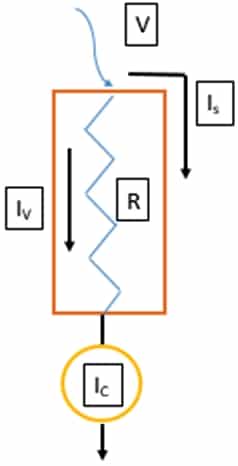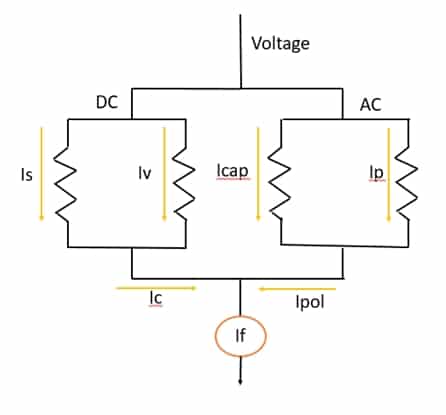
Insulation of an electrical equipment is generally associated with the capacity of the material to withstand a potential difference (voltage) at specific environmental conditions. Depending on the properties of the insulation media (air, oil, SF6, paper) the material is able to withstand a maximum voltage level for which it is designed, such voltage is specified in the nameplate of the equipment.
Now, if there is a sufficiently high voltage applied – i.e. due to an atmospheric discharge – as to breakdown the insulation of the equipment, then a short-circuit occurs and depending on the conditions of the fault, there could be terrible consequences!
Therefore, maintenance and measurements of insulation in transformers, conductors, circuit breakers, motors and others is crucial to ensure the lifetime of the equipment, that is why most technicians perform the insulation resistance test as a quality control measurement.
This insulation resistance test is generally associated with the use of a Megger instrument which typically applies DC voltage close to 500 VDC or 1000 VDC to the evaluated equipment. Most technicians tend to measure insulation with the use of the Megger and if the Insulation Resistance (IR) is in the order of MΏ or more, then they assure that the equipment’s insulation is appropriate…Do you think the same?
In order to better understand the consequences of this statement, we must understand the insulation model of an electrical equipment. First, let’s take a look at what the Megger actually measures:

Fig.1: DC Insulation Model
The figure 1, is referred to the DC insulation model of any electrical equipment, where:
Ic = Conduction Current
Is= Surface Current
Iv= Volumetric Current
The volumetric current is associated with the flow of electrons through (inside the equipment), the surface current is associated with the flow of electrons at superficial level (associated with contamination on the surface of the equipment) and the conduction current is the sum of the two.
When the Megger is used to measure insulation, the instrument applies a DC Voltage established by the user, then the instrument measures the conduction current obtained and simply applies the Ohm’s Law : V=I*R to obtain the insulation resistance.
Now, let’s take a look at the complete insulation model of an electrical equipment.

Fig 2: AC insulation model
Where,
Is: Surface Current
Iv: Volumetric Current
Ic: Conduction Current
Icap: Capacitive Current
Ip: Polarized current in AC
Ipol: Polarization Current
If= Leakage Current
As you can see, the real insulation model of an electrical equipment contains the DC and AC current components, where the leakage current is the reference parameter to understand the state of insulation.
So, what is the big deal with using a Megger?!
The deal is that the Megger only measures the DC side, in other words, measures the conduction current, which only represents 1% of the total leakage current! (Yes, 1%!). As you might think, if you want to have a real perspective of the insulation state of an electrical equipment, then, you must also consider the AC component (polarization current which accounts for 99% of leakage current).
That’s when the Doble instrument comes into action! Making an insulation test with this instrument will truly provide you the actual state of insulation in your electrical equipment because it takes into account the influence of capacitive and polarization currents from the AC model as well as the DC model.
So, why do the technicians use the Megger instead?
The reasons are simple:
- Knowledge
- Simplicity of connection
- Discard failures
Regarding knowledge, not all technicians are aware of this principle and involves a huge mistake when working with expensive and important equipment (power transformers for example) as they might be giving an insulation report based on false assumptions.
On the other hand, the simplicity of connection is referred to the easy and low weight transport of a megger instrument to the insulation measurement place. This happens when you need to take an insulation measurement on an isolated place where reaching with a more complex instrument like the Doble, involves a logistic process. Megger is easier to carry and connect than the Doble.
Conclusion
Finally, the Megger acts as a basic functioning instrument. If the result is 0Ω, then the equipment’s insulation is completely lost and no Doble measurement is required.
Therefore, especially if you are working with Medium Voltage Level equipment, you must be very careful with assuming that measurement of insulation only involves the use of a Megger!
If the Megger’s instrument offers a MΩ or GΩ resistance then it just tells you that the insulation is not completely gone, you still need to make the Doble’s test to make sure that the equipment is in the proper condition to work at nominal values!
Hi, this is Sanjana, I want to say that actually there are lots of manufacturing premium range of electrical components like Lugs, cable ties, cable cleats, cable accessories, Axi-weld Exothermic welding and more.
This post was very helpful. Thank you Steven.